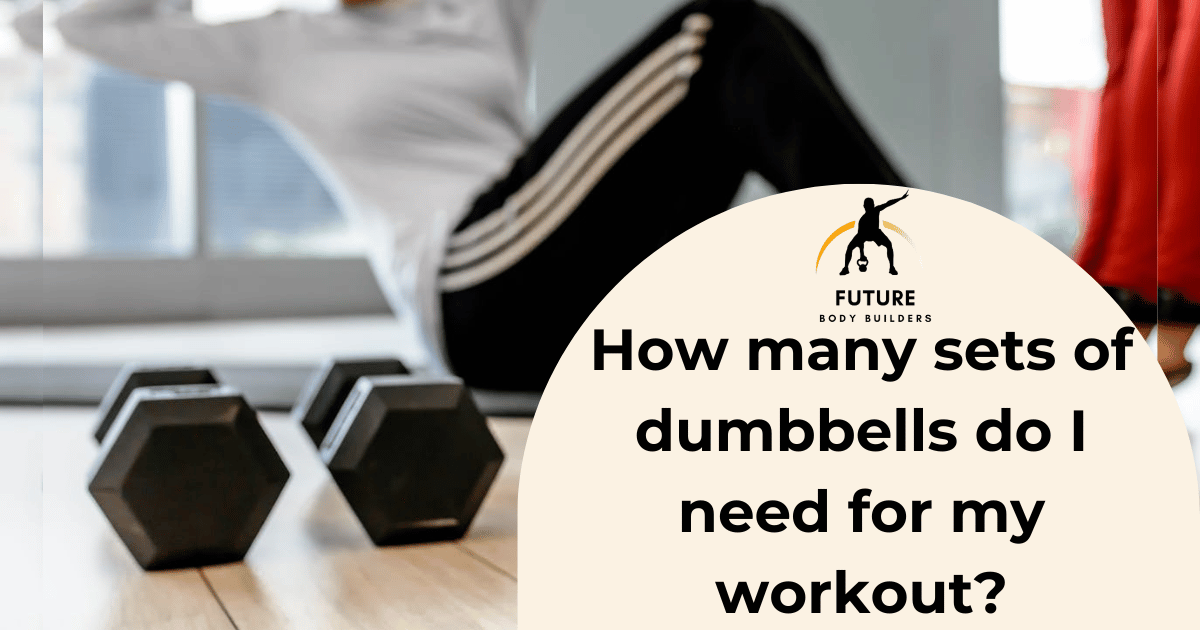How many sets of dumbbell do I need for my workout?


Choosing the right dumbbell weight and sets is a crucial step in your weightlifting journey. It plays a significant role in preventing injuries and ensuring that you’re targeting the right muscle groups.
In this article, we’ll guide you through the process of selecting the appropriate dumbbell weight for your needs.
To evaluate your strength effectively, follow these steps tailored for choosing the right dumbbell weights:
When using your new dumbbells, it’s crucial to avoid lifting too much weight initially. Start at the lower end of your dumbbell range to ensure safety and proper form. If you struggle to complete more than seven reps with a particular weight, it’s likely too heavy. Adjust to a lighter dumbbell, one to three pounds lighter, to find the optimal weight for your exercise.
Starting with manageable weights helps prevent injuries and promotes correct technique. Gradually increase weights as your strength improves to maintain focus on safe progression and effective muscle development.
If you’re new to exercising with dumbbells, here are some exercises you can start with:
The dumbbell squat is a great exercise for building lower body strength.
The glute bridge chest press is an excellent exercise for building chest and glute strength.
The dumbbell tricep extension is an effective exercise for building tricep strength.
The dumbbell bent over row is a great exercise for building back strength.
Deciding the number of dumbbell sets to perform is easy. The ideal range recommended by most fitness professionals is between two and six sets for each exercise, regardless of the number of reps per set. Doing less than two sets may not provide enough challenge, while exceeding six sets can overwork your muscles.
If you’re new to working out, a good starting point is three sets of 10-15 reps. Another crucial factor to consider is the duration of your workout. With rest periods ranging from 30 seconds to three minutes between sets, performing more than three sets per exercise can extend your workout time.
If you’re a woman, start with dumbbells weighing between 5-10 lb (2.3-4.5 kg). For men, begin with a set of 10-20 lb (4.5-9.1 kg) dumbbells. Aim for 14-22 bicep curls. If you can’t complete 14 reps, switch to dumbbells that are 5 pounds (2.3 kg) lighter.
If you can easily complete 22 reps without feeling a burn, add 5 pounds (2.3 kg) and try again. Once you find a weight that strains your muscles between 14 and 22 reps, you’ve found your starting weight. Remember to increase the weight by 5-10 pounds (2.3-4.5 kg) every 2-3 weeks to challenge your muscles.
Three sets of 10 reps is a good starting point for building muscle. This approach works well for beginners, as it allows for a good balance between muscle growth and strength development. While it may not be the most optimal approach for advanced lifters, it’s a great way to introduce newcomers to strength training.
Choosing the right dumbbell weight and number of sets is crucial for safe and effective workouts. Start with manageable weights to prevent injuries and focus on proper form. Aim for 2-6 sets per exercise, with 10-15 reps per set as a good starting point. Gradually increase weights as your strength improves to continue challenging your muscles. Remember, consistency and gradual progression are key to achieving your fitness goals with dumbbell exercises.
This is an error message
[…] you looking to build your tricep muscles with dumbbells? You’re in the right place. This beginner-friendly guide offers practical workouts and tips […]
Two should be okay and you’re good to go